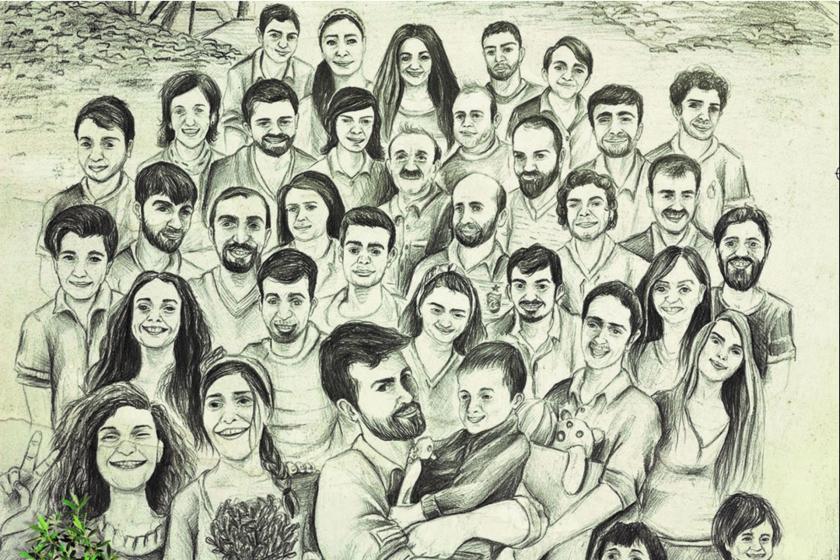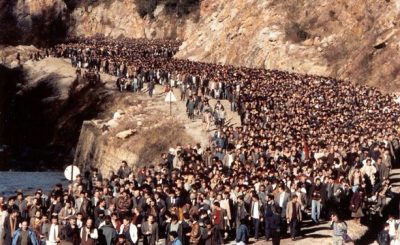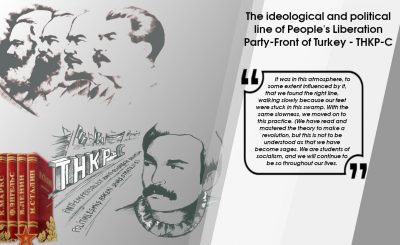Suruç is a municipality in Turkey, capital of the homonymous district, in the southeastern province of Turkey – or northern Kurdistan – of Şanlıurfa (more commonly known as Urfa).
On July 20, 2015, Suruç was the scene of a bomb attack by the self-proclaimed “Islamic State” (Isis) on members of the Sosyalist Gençlik Dernekleri Federasyonu (Federation of Socialist Youth Associations), in which 33 people were killed and 104 injured.
The young people had gathered in the city of Suruç, located near the border with Syria, as part of the campaign for the restoration of the city of Kobane (in Arabic: Ain al-Arab) located across the border, which is in fact part of the autonomous region of Rojava (Western Kurdistan). The city is in ruins after months of clashes between the Kurdish forces YPG (People’s Defense Forces) and the militants of the so-called “Islamic State”. After the end of the battles at the beginning of 2015, left-wing and progressive organizations in Turkey started a campaign to collect donations to help restore the city of Kobane.
On July 19, after the appeal of the Federation of Socialist Youth Associations (SGDF), young people, groups of anarchists and members of the Federation itself, come to Suruç from all over Turkey to head to the city of Kobane. The young people also bring with them the donations they have collected for the inhabitants of the Kurdish city.
At 11:50 on 20 July, while the young man is holding a press conference in the courtyard of the Cultural Centre Amara, a member of the so-called “Islamic State” causes the explosives attached to his body to be equipped.
As a result of the explosion, 330 people died and dozens of others were injured, many of them in serious condition.
The left-wing movement in Turkey accuses the Fascist power, led by President Erdoğan, of causing the massacre. The state denies these accusations and calls the massacre “an accident”. On the evening of 20 July, hundreds of people gathered in the streets to protest against the fascist massacre. There are mass protests in the cities of Istanbul, Izmir, Antalya, Hatay, Bursa, Denizli, Izmit, Kayseri, Antep, Çorlu, Batman, Mersin, Çanakkale and in the capital Ankara. In Istanbul, Mersin, Siirt and the city of Silvan, Diyarbakir district, protests were attacked by police and dozens of people were arrested.
The next day, the government announced that the attacker was twenty-year-old Seyh Abdurrahman Alagöz, who along with his brother Yunus Emre Alagöz, joined at the beginning of 2015 in the ranks of the so-called “Islamic State”. Yunus Emre will become known after October 10 of the same year as one of Ankara’s attackers on pro-Kurdish activists, in which more than 130 people were killed: the worst attack of its kind in the history of modern Turkey, occurred while the political parties were preparing for the parliamentary elections on November 1. [1]
From the evening of 20 July and the following days, in some parts of Istanbul, and especially in the Gazi district, located in the European part of the city, there are shootings between militias of revolutionary organizations and fascist police. The shootings in the neighborhood continue until July 26. During the clashes, a policeman was killed by the popular militia and several other people were injured. The clashes are made known by the media under the titles: “DHKP-C HAS STARTED A REVOLUTION!
At sunrise on July 24, the fascist power began large-scale operations against members of the Kurdistan Workers’ Party (PKK), the People’ Revolutionary Liberation Party (DHKP-C) and other leftist and revolutionary organizations. The government has declared that the operations are against “all terrorist groups operating on the territory of the country”. But these statements are in total contradiction with the actions that it has taken.
At 5:00 a.m. on the same day, SWAT anti-terrorist teams broke into private homes in the Bağcılar district of Istanbul. In the house of Günay Özarslan, a revolutionary, member of the People’s Front (previously in prison for a year and a half then acquitted of the charge), the police raided directly with a ram’s head and she was killed by 15 gunshots.
The fascist power and the bourgeois media spread the lie that Günay was “preparing a suicide bombing” and that she responded to appeals to surrender by shooting police officers. Of course, these statements are unsustainable. This is also evident from the “investigative actions” of the police that for hours did not allow lawyers to enter, to invalidate the area of the crime and hide that there was no shooting. Contrary to what the police claimed, in fact, at the scene of the crime there were no signs of conflict and therefore the “incident” was a real public execution. [2]
Only after three days, on July 27th, was Günay buried. During the funeral procession the police attacked the people and the revolutionaries who took part in it, who responded to the attacks with stones and cocktails of Molotov. The clashes and shootings last 80 hours, during which the district of Gazi turned into a battlefield. On July 27, in the afternoon, thousands of people greeted Günay Özarslan for the last time, while she was buried in the cemetery of the Gazi district next to her comrades.
Meanwhile, on 24 July, the Turkish Air Force began mass bombing the PKK positions in southern Kurdistan (northern Iraq). The bombardments continued for days and, according to some sources, 190 PKK fighters were killed.
During these days, mass arrests were carried out throughout the country and lasted almost until the end of July. According to data from human rights organizations, a total of 1034 people were arrested, all members of left-wing and progressive organizations.
On 25 July, DHKP-C fighters carried out an armed attack on a police station in the Okmeydanı district of Istanbul. Three police officers were injured in the action, one of whom was seriously injured. In a statement the DHKP-C announced that the action was aimed at asking the fascist police to account for the murder of Günay Özarslan.
On 8 August, DHKP-C fighters carried out an armed attack against the headquarters of the regional council of the ruling fascist party AKP, located in the Sütlüce district of Istanbul. A security guard was seriously injured on this occasion.
On 10 August, DHKP-C fighters launched an armed attack on the American consulate in the Sarıyer district of Istanbul. During the attack, they opened fire on the police officers who were guarding the building, and some of them were injured. The others came out and chased the fighters. In the course of a shooting in the consular area, the revolutionary Hatice Ashik was injured. Even if she runs out of cartridges she continues to resist. Hatice starts throwing stones at the surrounding policemen. The 51-year-old revolutionary was found guilty and, during the imprisonment of the fascist state, seriously injured, she falls into a coma.
In a statement, the DHKP-C announced that the armed actions of 8 and 10 August aimed to call to account the massacres perpetrated by the American imperialists and their lackeys in the power of the fascist AKP for the massacre in the city of Suruç and the murder of Günay Özarslan. The DHKP-C says that President Tayyip Erdoğan and then Prime Minister Ahmet Davutoğlu met with representatives of the U.S. imperialists on July 7-8 of the same year and took the decision to destroy both the DHKP-C and all resistance movements in Turkey and Kurdistan.
On August 19, DHKP-C fighters carried out an armed attack against police officers on the guard of the Dolmabahçe Palace in Istanbul, used by the Prime Minister as an office during his visits to the city. Several police officers were injured. The fighters were able to withdraw. DHKP-C announced that the action should be called to account for the assassination of 33 anti-fascists in the city of Suruç, the assassination of Günay Özarslan and the torture of the captured revolutionary Hatice Aşık.
With the massacre of 20 July 2015, the fascist state in Turkey marks the beginning of the first phase of its massive war against the Turkish people and Kurdistan.
[2] https://www.birgun.net/haber-detay/gunay-ozarslan-beraat-etmisti-85511.html



